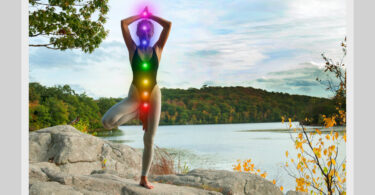That, according to all experience, a natural disease can never be cured by medicines that possess the power of producing in the healthy individual an alien morbid state (dissimilar morbid symptoms) differing from that of the disease to be cured (never, therefore, by an allopathic mode of treatment), and that even in nature no cure ever takes place in which an inherent disease is removed, annihilated and cured by the addition of another disease dissimilar to it, be the new one ever so strong;
Earlier in the aphorism, Hahnemann emphasized the need to identify what was the disease to be cured. The means of curing it was by observing the TOTALITY of symptoms that indicated the similimum remedy.
In the second part of the aphorism, he states that in nature, there are 3 possible ways by which symptoms of a patient could be relieved, but only ONE method of true cure. Again we come up with the term CURE and what it means from the homeopathic perspective. Too often the term is loosely used to signify symptom relief with no concern for longterm status. Hahnemann reminds us first what cure is NOT, why it isn’t possible through non-homeopathic methods that do not follow the Law of Cure; of Similars.
The FIRST mode of action is through a medicine that produces in a healthy state an ALIEN morbid state that differs completely from the disease to be cured. This is the ALLOPATHIC mode to treatment. This is what is described as DISSIMILAR DISEASE in Aphorisms 36, 37, 40, 44 where he explains in detail 3 different outcomes of two dissimilar diseases meeting in an individual. Neither of these 3 outcomes could result in cure.
Today’s practice of modern medicine is ‘symptomatic treatment’, where a single remedy seeks to deal with a single symptom. This is a hybrid variety of the ALLOPATHY that Hahnemann was referring to. If a person has only one apparent symptom, then there is one symptomatic remedy for it “proved” of its effectiveness by the Gold Standard of Randomized Controlled Trials (RCT).
What happens when a person has numerous symptoms? One symptomatic remedy for each symptom is the usual answer. This results in a cocktail of chemicals that form an individual prescription but the drugs are proved by Gold Standard RCT’s only individually! People with advanced pathology treated by modern medicine end up pill-popping, often almost upto 20-25 ‘life-saving’ pills per day!
When will homeopaths and homeopathy reach that point of development where we are able to treat these situations confidently with correctly indicated single remedies?
That, moreover, all experience proves that, by means of medicines which have a tendency to produce in the healthy individual an artificial morbid symptom, antagonistic to the single symptom of disease sought to be cured, the cure of a long-standing affection will never be effected, but merely a very transient alleviation, always follows by its aggravation; and that, in a word, this antipathic and merely palliative treatment in long-standing diseases of a serious character is absolutely inefficacious;
The SECOND mode of action of any externally applied remedy, is by using a medicine that produces in a healthy individual artificial morbid symptoms that are ANTAGONISTIC to the single symptoms of disease sought to be cured. There are three major problems with seeking to cure ANTIPATHICALLY [Aph #56, 57,58,59].
1. It seeks to cure only “the single symptom of disease“. We know as homeopaths, instead, we seek the TOTALITY of disease to be cured. The single symptoms is inadequate.
2. It seeks to cure by antagonistic means. The follow through is that even though the single symptom opposed by the medicine is relieved, one has to take into consideration first if this symptom is recent or long standing.
The result is that ‘recent’ symptoms are easily palliated for a while while the ‘internal disease’ (of the vital force) progresses and is later expressed again, either as a repeat of the same symptom, or a modification of it.
Chronic symptoms are also relieved by antipathy, for a very transient period of time, only to return in a short while, more aggravated and more severe through secondary counter action of the vital force [Aph#63]. This then requires more repetition of this medicine in higher and higher doses, to suppress the symptom leading to deeper suppression of the vital force.
3. Chronic disease could never be cured by Antipathic means as there is no involvement of the vital force to cure itself in this approach. Rather, the vital force is forced to remain in a state of primary passive action, battered by the external onslaught of antagonistic medicine.
This could happen through homeopathic medicines or other medicines – herbal; symptomatic.
That, however, the third and only other possible mode of treatment (the homeopathic), in which there is employed for the totality of the symptoms of a natural disease a medicine capable of producing the most similar symptoms possible in the healthy individual, given in suitable dose, is the only efficacious remedial method whereby diseases, which are purely dynamic deranging irritations of the vital force, are overpowered, and being thus easily, perfectly and permanently extinguished, must necessarily cease to exist. This is brought about by means of the stronger similar deranging irritation of the homeopathic medicine in the sensation of the life principle. – and for this mode of procedure we have the example of unfettered Nature herself, when to an old disease there is added a new one similar to the first, whereby the new one is rapidly and forever annihilated and cured.
In homeopathy, CURE means the annihilation of disease from its roots. It is what is expected of the similimum. Yet, how many of us have the opportunity to observe a case long enough to be able to say with confidence that we “cured” them of their problems? Various clinical situations come up in terms of using the word cure:
1. At what point of time is a condition considered cured?
We first ask whether the condition in question can be classified an expression of acute or chronic disease [Chronic Diseases pg 35, Organon Aph 99, 205, 206].
True acute diseases (which have as their cause acute miasma, half-acute miasma [Chronic Disease pg. 35 footnotes] can be cured more easily. This is because the (dynamic) impact they have on the vital force for the long term has been removed by the similimum. This also means that in the longterm, this case will not have a “never been well since” attributed to this disease.
In contrast, if the acute disease has been suppressed either by a partial/superficial homeopathic remedy or any other drug, its dynamic impact on the vital force continues, even though the superficial (external) expression of symptoms appear to have disappeared. So it is possible this will contribute to future expression of disease that can be correlated to a “never been well since” that acute disease. Following an appropriate similimum remedy, the “old” symptom of this acute disease will return as per Hering’s Law of Cure.
2. At what point do we claim cure in chronic disease?
This too is a question that is difficult to answer and is individual to a case.
When we treat a patient with a similimum, there is no point of time that a person can be considered as completely cured. What happens though, is that there is a regression of symptoms as per Hering’s Law of Cure, a cure initially happens of the most recent disease expressions. Improvement is noticed in the miasmatic progression of disease, towards an expression of the individual’s fundamental miasms.
This means that homeopathic treatment is time related. We have no quick fixes here. The only thing that is fixed quickly and almost magically by a true similimum remedy, is a disease state that has arisen in the recent past. A magical disappearance of a chronic symptom is almost always a sign of palliation or suppression. Those complaints that have arisen early in childhood or adolescence will require a number of years to reach the point that could be termed cure.
A well trained, experienced homeopath, during this waiting period, may prescribe for a variety of situations that will arise, as individual as every case, that would need an acute remedy, an intercurrent remedy, a constitutional remedy, chronic phase remedies, an antimiasmatic remedy and in some cases, supportive specific remedies. All this depends on how the case of disease evolved and was suppressed over time. There is only a small percentage of cases that will require only one single chronic similimum over a lifetime time.
This also means that to benefit maximum from classical homeopathic treatment, the patient has to be ready for the long haul. But, the benefits are great: one stops the progression of miasmatic disease, there is a regression of majority of pathological change, improved sense of wellbeing, a strengthening of the immune system, and expectedly no new pathology developing.
Bibliography:
1. Hahnemann, Samuel; Organon of Medicine
2. Hahnemann Samuel; Theory of Chronic Diseases
3. Allen T.F; Boenninghausan’s Therpeutic Pocket Book
4. Boger, CM; A Synoptic Key of the Materia Medica
5. Boger, CM: Studies in the Philosophy of Healing
6. Das, Ashok Kumar: Treatise on the Organon of Medicine
7. Dhawle, ML; ICR Symposium Voumes I,II,III
8. Kent, James T; Lectures on Homeopathic Philosophy
9. Dudgeon RE, Boericke William; Organon of Medicine by Samuel Hahnemann, Fifth and Sixth Edition Combined.



